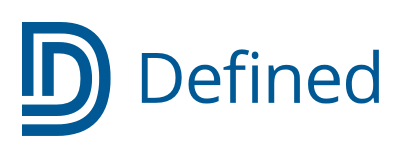As a futurist and innovator, Tim Brown looks at emerging technologies such as artificial intelligence, autonomous vehicles, and robotics to figure out where the economy, industry, and technology will intersect in the future. He’s the vice president of innovation and advanced research for the United Services Automobile Association (USAA), which provides its 12 million members with everything from mortgage advice to retirement planning. Recently, Brown served on an innovation panel that’s focusing on innovation in education by preparing corporations for students graduating from our schools and preparing schools for what corporations need. His message for administrators? “Advancement is happening at an exponential rate, and it is much closer than you think. Our children need to adapt more quickly than anyone ever has. And our schools and curriculum have to move even quicker.”
To serve our students better, Brown says schools have to change the way they operate. There needs to be more collaboration with students and corporations, and schools have to be open-minded and allow students to experiment and learn from their mistakes. “This will require a different way of teaching, one that calls for agility and is based on feedback and adjustment,” he says. “The tools and the application of the tools will have to change to be relevant.”
Out-of-the-Box Career Counseling
As the first district to use G Suite in 2008 (back when it was still called Google Apps), Maine Township (IL) High School District 207 is well known for being innovative and ahead of its time. When it comes to career and workforce skills, the district has already made a lot of changes to revamp its program.
“In a perfect world, we’d be able to offer a class for every student, based on their hopes, dreams, talents, and passions, that they could make their life’s work,” says Superintendent Ken Wallace, who was recently named Champion of the Year by the 2017 Illinois Association for Career and Technical Education. Since the world isn’t perfect, District 207 is offering integrated courses with real-world experience and work experiences like internships and apprenticeships. The district has also remodeled its college and career counseling program to be more relevant and useful.
In geo-construction, a blended geometry and construction course, students gain math skills while building houses for Habitat for Humanity. “This kind of learning really moves the students; they get the ‘why’ as well as the ‘what,’” says Wallace. The course also includes a small business strand for students wh o want to start their own construction company. Not only do these students graduate with marketable job skills, but they also outperform their peers who take traditional geometry classes, on the same assignments.
o want to start their own construction company. Not only do these students graduate with marketable job skills, but they also outperform their peers who take traditional geometry classes, on the same assignments.
The district is developing more blended courses (algebra is next), and Wallace hopes these courses will help students figure out what they want to do after high school. District educators are embedding Defined STEM's real-world, project-based lessons—into all of their courses, and they’re helping students get internships so they can gain firsthand experience in different careers and find the right fit. “We’d like to spare students from realizing ‘I don’t want to do this’ after two years of college.”
Guidance counselors meet with incoming freshmen and their parents the spring before they start high school to discuss individual career plans. “Instead of having students wait until their junior year, we’re encouraging them to begin the career exploration process earlier and do job shadowing, internships, or apprenticeships. We want them to have at least one relevant career experience because better-informed students make better decisions,” says Wallace.
The district has also started to offer financial advice, hoping to help families understand the economics of various degrees. “If you’re going to be a pharmacist you may be able to carry a larger debt load,” Wallace says, “but not all bachelor’s degrees are created equal.”
For the full article, go to Tech & Learning Leader.

